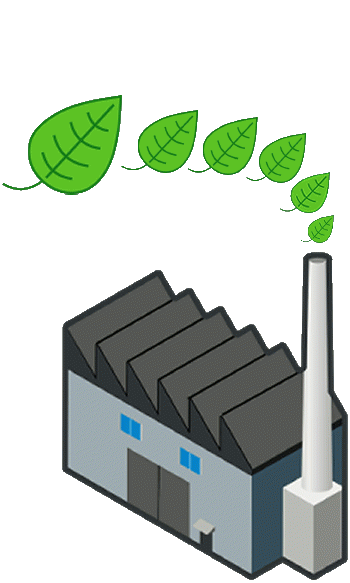Recent renewable energy developments are (quite) promising, and could significantly impact carbon resulting from power generation and transport.
They need to - global energy & heat generation emitted a new record of over 37.4 Gt in 2023.
CCS, electrification - and potentially hydrogen - will help, but uptake is far below what's needed, costs are very high and infrastructure and investment remain poor. Most importantly, it will take decades to implement all that - and we don't have decades.
Industry makes up a large part of our emissions, and much of that infrastructure is BUILT around fossil fuel. It can't be converted to renewable electricity readily, or in many cases at all. Even where conversion is possible, it's slow and expensive.
On top of that, in many places - including highly-industrialized nations - the power grid feeding this infrastructure is inadequate for the much greater load its electrification will require, so 1000s of miles of grid ALSO need
building or upgrading.
That's not only expensive, but needs many, many thousands of
tons of new copper, steel and everything else to be extracted and refined - itself a massive, and polluting, load on the planet.
But don't forget - this is infrastructure essential to our world:
cement, chemicals, pharma, clothing, food and drink...
Then there's everything ELSE that we service using fossil fuels; hospitals, schools, offices, stores...
Taken all together, CO2 emissions from energy and industry account for roughly HALF of the total, and look set to be with us for far too long - unless we find a solution for BOTH.
Realistically, we're stuck with massive fossil-fuelled energy and industrial emissions for decades. Or are we?
Emissions reduction for these thousands or millions of emitters has progressed little so far. Most effort is going into clean power that in practice won't fix these for many years, if ever.
And demand will continue to increase.
There are 2 things we can do with emitted CO2.
- Store it, like Carbon Capture & Storage (CCS).
- Or use it. That's so far proven elusive, which is why so much effort is going into CCS.
But, conventional CCS is expensive to build and maintain (which it will need for decades or centuries, BTW); offers poor payback; and leaves a long-term environmental risk for our kids, with potentially billions of tonnes of CO2 under pressure beneath their feet.
It's also complex, needs sophisticated operation and support, and requires specific geology.
Implementation is consequently very limited.
So - since CCS won't address most of our emissions, we need something that can.
CarbonGood - Hydroponic Carbon Capture Anywhere, Simply - proposes an alternative that's implementable at massive scale, anywhere, in just a few years.
Hang on, can't biomass be used in these emitters?
That's carbon-neutral isn't it?
Biomass uses plants or trees as fuel, instead of gas or oil.
Plants and trees absorb CO2 as they grow, so the logic is that burning these, then growing more to absorb the CO2 you make burning them, is carbon-neutral.
The logic kinda works, but has four big problems.
First, fossil-fuelled facilities need significant re-engineering to switch from coal/oil to biomass.
Second, biomass has low energy density compared with fossil fuels - so the logistics of biomass supply in the volumes needed are considerable. And of course, unlike oil or gas, biomass cannot be piped.
Third, we’ve almost nowhere left to grow biomass. 40% of Earth’s land surface is already used for food, and it isn't enough – millions have barely enough – or too little – to eat now. Most of the remaining 60% is either lived on, cannot be used, like desert, or (like forests) needs to be left alone.
Switching anything LIKE enough land from other uses to grow the biomass amounts needed is very, very difficult. As an example, the UK’s Drax biomass power plant consumes 20,000 tons of wood pellets a DAY.
That’s trees the UK doesn’t have, so the biomass is imported from USA, Canada, Europe and Brazil. That brings a
high carbon penalty
just in shipping, plus the carbon footprint of logging,
chipping, drying and pelleting the biomass. It's unsurprising that Drax is highly controversial.
Fourth, the concept assumes the grow-burn-grow cycle is 100%-efficient. As any physicist or engineer will tell you, there's no such thing.
So, to answer the original question: NO - the other stuff WON'T lower CO2 emissions enough anyway.
CarbonGood just might.
And CarbonGood could potentially even deliver on the the elusive promise of BECCS - BioEnergy with Carbon Capture and Storage, a truly carbon-negative solution. Here's how.



